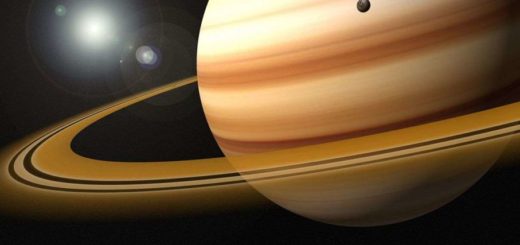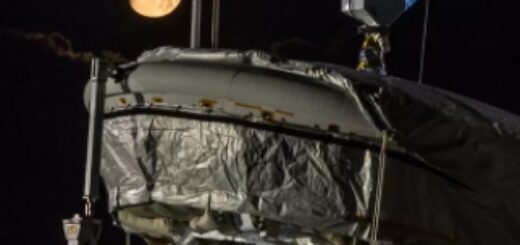Space photos: The most amazing images this week!

A helicopter on Mars photographed heart-shaped rover tracks, an astronaut took a photo from space of Tropical Storm Elsa and the space station will receive a new arm. These are some of the top photos this week from Space.com.
Heart in rover’s tracks
NASA’s Ingenuity Mars Helicopter captured this image, which features tracks made by the Perseverance rover, using its high-resolution color camera during its ninth Red Planet flight, on July 5, 2021.
(Image credit: NASA/JPL-Caltech)
See the heart in the middle of this image? NASA’s Mars Perseverance rover created these tracks as it rolled along and pivoted over the Red Planet’s dirt. The space agency’s Ingenuity helicopter, which rode along with Perseverance to reach Mars in February 2020, captured this image during its most recent flight.
Ingenuity performed its ninth flight in the Martian sky on Monday (July 7). If the rotorcraft remains in good enough shape to continue working, Ingenuity will continue flying for the next several months.
Full story: Mars helicopter Ingenuity spotted a ‘heart’ in Perseverance rover’s tracks on 9th flight (video)
Planet is going public
This photo, captured by one of Planet’s Dove Earth-imaging cubesats on March 25, shows the container ship Ever Given stuck in the Suez Canal (top left) and the queue of ships waiting to enter the canal from the Red Sea.
(Image credit: Planet Labs, Inc.)
Planet, a company based in San Francisco, CA that operates the largest collection of Earth-observing satellites in the world, will be traded on the New York Stock Exchange. The company, which will trade under the ticker name “PL,” announced on Wednesday (July 7) that it will merge with a special purpose acquisition company. This will bring Planet’s value up to $2.8 billion.
This photo was taken on March 25, 2021 by one of Planet’s Dove Earth-imaging cubesats. This is a view of the entrance to the Suez Canal, which was filled with cargo ships waiting for the container ship Ever Given to dislodge from its place, where it was stuck in the canal.
Full story: Earth-observing satellite startup Planet is going public
Tropical Storm Elsa
Tropical storm Elsa photographed from the International Space Station.
(Image credit: NASA)
NASA astronaut Megan McArthur, who is currently onboard the International Space Station, took this photograph of Tropical Storm Elsa as it reached Florida. McArthur got a great view of the churning storm from the station’s orbit altitude of 250 miles (400 km). NASA also tracked the storm by obtaining high-definition hemispheric views of Earth using the NASA-NOAA Suomi National Polar-orbiting Partnership (NPP) satellite.
Full story: Satellites and astronauts track Tropical Storm Elsa from space (photos)
New space station arm
The European Robotic Arm will service the Russian segment of the International Space Station.
(Image credit: Airbus)
This is the European Robotic Arm, which was built by European aerospace company Airbus for the European Space Agency (ESA). The arm will service the Russian segment of the International Space Station and it’s scheduled to fly into space on July 15.
The arm is made of lightweight aluminum and carbon-fiber structure. Once it is operating, the arm will be able to move and install components up to 17,600 lbs. (8,000 kg) in weight and maneuver them with high precision. The International Space Station already has two robotic arms: the Canadarm2 and the Japanese Experiment Module Remote Manipulator System.
Full Story: Europe will launch a new two-handed robotic arm to the International Space Station soon
Three satellite launches in four days
A Long March 3C rocket blasts off from the Xichang Satellite Launch Center in southwest China’s Sichuan Province, on July 6, 2021. China successfully launched a new relay satellite from the Xichang Satellite Launch Center at 11:53 p.m. local time in Beijing.
(Image credit: Wenbin/Xinhua)
China performed a series of satellite launches this past week. On Tuesday (July 6), a Long March 3C rocket launched from the Xichang Satellite Launch Center in southwest China’s Sichuan Province. This event was the last of three orbital launches that China performed in four days. The day before this launch, on Monday (June 5), China launched a Long March 4C rocket from the Jiuquan Satellite Launch Center in northwest China. On July 2, China launched a Long March 2D rocket in Taiyuan, in the country’s north.
Full story: China picks up the launch pace with three space missions in four days
Moon rocket another step closer to completion
The Interim Cryogenic Propulsion Stage being lowered atop the Space Launch System rocket at the NASA Kennedy Space Center in Florida.
(Image credit: NASA)
Engineers at the NASA Kennedy Space Center in Florida lowered the 5,500-pound (2,480 kilograms) Interim Cryogenic Propulsion Stage (ICPS) on top of the Space Launch System lunar rocket earlier this week, moving another step closer to completing its assembly.
The ICPS, which sits above the 212-foot (65 m) tall core stage just below the Orion module, will give the Orion space capsule the final push needed to get beyond the moon. Located between the launch vehicle stage adapter and the Orion stage adapter, the stage is fitted with the tried and tested liquid oxygen and liquid hydrogen RL 10 engine used on the United Launch Alliance’s Delta IV rockets. — Tereza Pultarova
Dragon packed with urine samples ahead of departure from space station
The CRS-22 Cargo Dragon spaceship packed with scientific experiments ahead of its departure from the International Space Station on July 8 2021.
(Image credit: ESA/Thomas Pesquet)
Over 4,400 pounds (2,000 kilograms) of scientific samples and other material can be seen packed inside the Dragon cargo capsule ahead of its departure from the International Space Station today. The European Space Agency (ESA) astronaut Thomas Pesquet tweeted the image just as the crew was preparing to send off the spacecraft for its 37-hour-long return journey to Earth.
In another tweet, the French spaceman shared details about the contents of some of the experiments: “Just before closing the hatch, we pack it full of our frozen bodily fluids: blood, urine, saliva… and more that I won’t mention,” he wrote. — Tereza Pultarova
SWOT’s inside?
An innovative instrument for monitoring sea levels and fresh water resources arrives at Thales Alenia Space ahead of integration onto the SWOT satellite.
(Image credit: Thales Alenia Space)
A next generation instrument that will revolutionize the study of ocean circulation and fresh water bodies on land has arrived at Thales Alenia Space facilities in Cannes, southern France, for integration with the satellite.
The instrument, the so-called swath interferometer, was designed by NASA Jet Propulsion Laboratory (JPL) in California, and will fly to space in November 2022 as part of the Surface Water and Ocean Topography mission SWOT. Instead of measuring water surface levels one point at a time, directly below the satellite, as existing altimeters do, SWOT will take measurements of two 60m-wide swaths of the surface below. This will allow the mission to, for the first time, precisely measure water surfaces of relatively small water bodies such as lakes and rivers. — Tereza Pultarova
Astronauts practice for fire on space station
Members of the upcoming Expedition 66/67 during a fire exercise inside a mock-up of the International Space Station.
(Image credit: ESA/ Matthias Maurer)
Astronauts who will fly to the International Space Station later this year practiced how to deal with a fire outbreak in space during an exercise at the NASA Johnson Space Center in Houston, Texas.
Five members of the upcoming Expedition 66/67 took part in the training, donning smoke protection masks inside a space station mock-up. “Fire, depressurisation or toxic atmosphere – on the @Space_Station we have to be prepared for anything,” European Space Agency (ESA) astronaut Matthias Maurer tweeted with a series of images from the training. “In such extreme situations, teamwork and coordination are vital, which is why we practice emergency procedures together.” — Tereza Pultarova
Tropical storm Elsa seen from space station
Tropical storm Elsa photographed from the International Space Station.
(Image credit: NASA)
NASA astronaut Megan McArthur took a picture of tropical storm Elsa on Sunday (July 4) as it was making its way through the Caribbean towards the coast of Florida.
The storm approached Jamaica and the south of Cuba on Monday morning (July 5), forcing the evacuation of 180,000 people. The storm is forecasted to hit Florida north of Tampa on Tuesday night or Wednesday morning. With current wind speeds of 65 mph, Elsa has the potential to strengthen into a hurricane over the shallow and warm Caribbean waters, according to Accuweather. The storm previously briefly reached the intensity of a hurricane on Friday but has weakened over the weekend. — Tereza Pultarova



 Creators of mankind
Creators of mankind Description of “Tall white aliens”
Description of “Tall white aliens” Where they came from?
Where they came from? About hostile civilizations
About hostile civilizations The war for the Earth
The war for the Earth “Tall white aliens” about eternal life
“Tall white aliens” about eternal life Video: “Nordic aliens”
Video: “Nordic aliens” Aliens
Aliens Alien encounters
Alien encounters The aliens base
The aliens base UFO
UFO Technology UFO
Technology UFO Underground civilization
Underground civilization Ancient alien artifacts
Ancient alien artifacts Military and UFO
Military and UFO Mysteries and hypotheses
Mysteries and hypotheses Scientific facts
Scientific facts


















